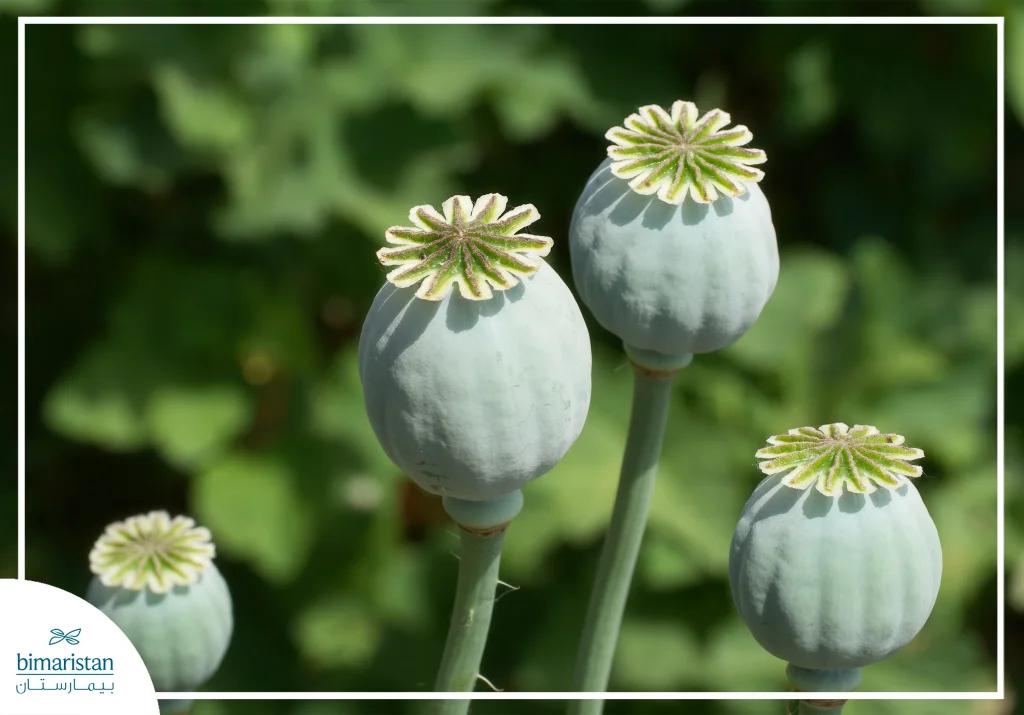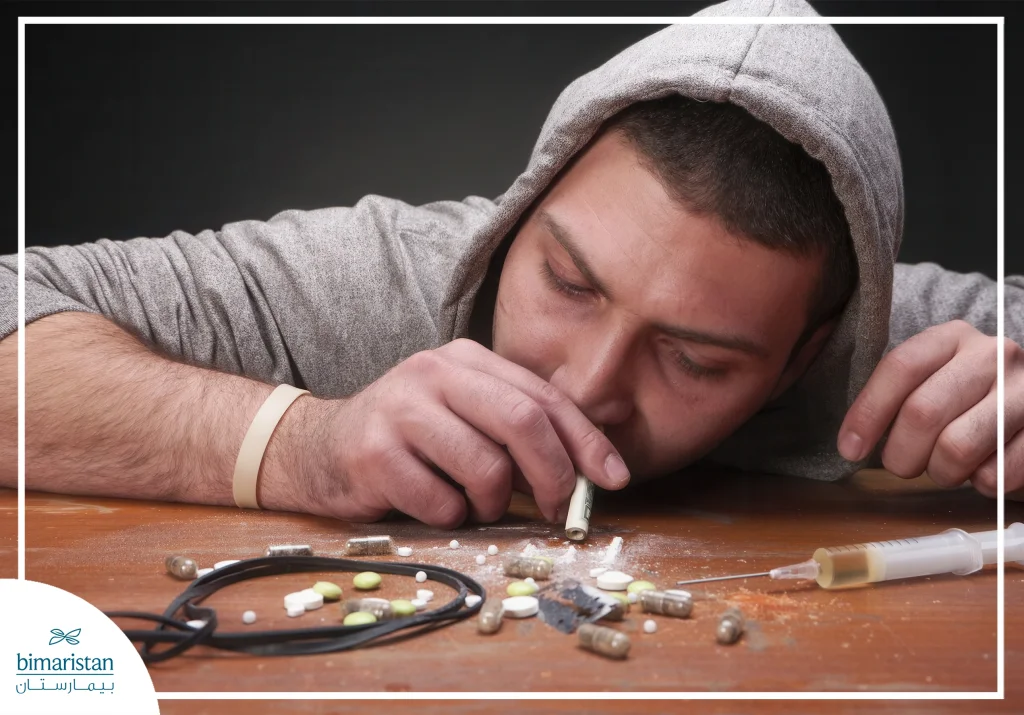Opium is a narcotic substance that has been used for long periods of time, as it was initially used in the medical field to relieve pain and treat some medical conditions, but unregulated use and dependence on it led to the emergence of opioids addiction, which has become one of the biggest health and social challenges in the world today. Over time, it has been found that opium has properties that lead to psychological and physical addiction, making it difficult for addicts to stop using it naturally without the intervention of specialized treatment.
People addicted to opium suffer from a range of symptoms that may vary in severity and appear gradually, so it is very important to recognize the signs of opioids addiction early because it helps in taking the necessary therapeutic measures before the condition develops and its negative impact on the patient’s physical, psychological, and social health.
Opioids addiction not only affects an individual’s health, but also their social life, family relationships, and career, increasing the need for awareness and early intervention.
What is Opium?
Opiates are a wide spectrum of narcotic substances that are extracted and synthesized mainly from the opium poppy plant, and have been used since ancient times in the medical field to treat severe pain, especially in cases that require effective and rapid pain relief. opiates vary between natural substances and synthetic derivatives.
Opiates include natural substances such as opium itself, which is the raw material that is extracted from the poppy plant, where the sap is collected that contains active compounds known as opiates, which are later synthesized to obtain drugs that are used in many types of treatments in addition to their synthetic derivatives such as morphine, codeine and heroin, they vary in their composition and effect, and are sometimes used for therapeutic purposes, but unregulated or excessive use of these substances may lead to addiction
How Opium Works in the Body
When opiates are ingested and enter the patient’s body, they bind themselves to special receptors in the brain and parts of the nervous system, these receptors are called opioid receptors and are mainly found in areas responsible for pain, mood and breathing control, when opiates bind to these receptors they inhibit the transmission of pain signals, that is, they stop or slow down the transmission of nerve signals, so the patient feels less pain, making him feel temporary relief and happiness.
But it doesn’t stop here; this connection between opium and its receptor also stimulates the release of chemicals in your brain known as sedative substances, which give the patient a sense of calm, euphoria, and relaxation. So the person who takes opiates feels happy and comfortable, which encourages repeated use and leads to opioids addiction in later stages.

History of the use of opium as a treatment
The history of using opiates as a treatment goes back thousands of years, as it was one of the first substances used in history to treat pain and various diseases, as it is believed that ancient civilizations were among the first to use opium for medical purposes, since about 3400 BC opium was extracted from the poppy plant and used to treat a variety of conditions including pain and constipation, as it was considered an effective and highly valued treatment and used in traditional medicine for centuries.
In the Middle Ages, European doctors began to use opium extensively, especially in the treatment of pain and spasms, as it was mixed with other substances to effectively relieve pain, and in the nineteenth century, morphine was synthesized as a derivative of opium and began to be widely used in hospitals to treat severe pain, especially during surgical operations or after injuries, and in the late nineteenth century, heroin was developed as a synthetic derivative of morphine and was initially thought to be safer and better for medical use, but it soon turned out to be more addictive and dangerous, resulting in its use being severely restricted.
For decades, opioids were used to treat pain in hospitals and clinics, but as the risks of addiction and side effects were discovered, the health community began to strictly regulate their use with a focus on legalized medical uses and the development of less risky alternatives.
Today, opioids are still used to treat severe pain, especially in critical medical conditions, but with greater awareness of their risks, they are used with caution and under close medical supervision, with a constant search for safer alternative treatments.
How does opium become addictive?
Opiates become addictive through a complex process that begins when a person uses this substance to relieve pain or to feel relief and euphoria, with repeated use of opium the receptors begin to adapt to the presence of the substance and become less sensitive or less responsive to it This is known as the phenomenon of tolerance where a person needs a larger dose of opium to obtain the same level of euphoria or sedation, eventually the body becomes accustomed to the presence of opium and its intake becomes necessary for normal brain functioning.
With continued use, the structure and function of the brain change permanently, as the person becomes unable to feel comfortable or control their psychological state without the presence of opium, which is known as psychological addiction. In addition, the chemical balance in the brain changes, and the body begins to depend on the substance physically, so that withdrawal symptoms appear when trying to stop.
In short, opium becomes addictive through a gradual process that begins with its positive effect on the brain, and then develops into chemical and biological changes that promote psychological and physical dependence, making it difficult to stop without specialized treatment. This process depends on the complex interaction between the chemical, brain receptors, and changes in reward systems and mood control, making addiction both a psychological and an organic disease.

Opioids addiction causes
The reasons that lead to opioids addiction are multiple and complex, and vary from person to person based on environmental, psychological, and biological factors:
- Unregulated or excessive use: When opium is used non-medically or without medical supervision, especially for long periods of time, it increases the likelihood of developing dependence and opioids addiction, as the body becomes accustomed to the presence of the substance and begins to rely on it.
- Chronic pain and health conditions: People with chronic pain or serious illnesses may be given opium as a treatment, and if used excessively or for long periods without careful monitoring, it increases the risk of opioids addiction.
- Family history or genetics: Having family members with addiction or a family history of mental health issues increases the likelihood of developing an addiction, as genetic factors play a role in susceptibility to opioids addiction.
- Psychosocial factors: Such as anxiety, depression, or mood disorders—some people turn to opium to escape from psychological pressures or social issues, which accelerates the development of dependence and opioids addiction.
- Constant exposure to stress: A difficult environment, poverty, or harsh social conditions may lead people to try opium as a way to relieve stress or escape reality, increasing the likelihood of opioids addiction.
- Lack of awareness and education: Lack of understanding of the dangers or misuse of opium, especially among young people, leads to irresponsible experimentation, which accelerates the development of opioids addiction.
- Psychiatric or behavioral disorders: Sometimes opium is used as a means of relieving psychological symptoms, increasing the likelihood of opioids addiction.
- Easy access and availability: Illegal availability or poorly regulated use of opium in some areas makes it easier for people to access it, increasing the chances of overuse and opioids addiction.
Psychological and physical symptoms of opioids addiction: How do you recognize them?
Symptoms of opioids addiction can be severe and vary from person to person, and typically include
Changes in behavior
- Isolation from friends and family
- Loss of interest in previously enjoyable activities
- Mood swings such as depression or anxiety
Physical changes
- Unexplained weight loss or weight gain
- Changes in sleep, such as insomnia or excessive sleepiness
- Red or swollen eyes
- Respiratory issues or persistent coughing
Physical and mental symptoms
- Poor concentration and memory
- Gastrointestinal disorders, such as nausea or constipation
- Signs of subcutaneous or intravenous opium injection
Signs of opioids addiction
- The constant need to use opium and the inability to stop
- Withdrawal symptoms when trying to stop, such as sweating, shaking, or insomnia
Watching for these signs early on can help with early intervention, making it easier to deal with the issue before it gets worse. If a person notices any of these signs, it is advisable to seek professional medical or psychological support.
Opioid withdrawal symptoms
Opiate withdrawal symptoms can be severe and vary from person to person, and typically include
Physical symptoms
- excessive sweating
- Twitching or shaking
- Muscle and joint pain
- nausea and vomiting
- Diarrhea or digestive disorders
- Sleep disturbances, such as insomnia or nightmares
- Increased heart rate and high blood pressure
Psychological and emotional symptoms
- Severe anxiety or panic
- Depression
- Irritability or aggression
- Craving to use opium again
- Concentration and thinking disorders
Miscellaneous symptoms
- Feeling very tired
- Desire for solitude
- Mood disorders in general

Opioids addiction treatment, and recovery support
Opioid addiction treatment is a complex process that requires multiple and complementary efforts to help the addict overcome opiate addiction and regain a healthy and stable life, as treatment methods vary between medical, psychological, and social strategies, each of which aims to provide the necessary support at different stages of the recovery journey.
Providing a safe, supportive, and encouraging environment significantly contributes to the success of the recovery process, enhancing the patient’s chances of building a new, drug-free life and effectively dealing with daily challenges. Commitment to ongoing treatment and support is the cornerstone of sustainable recovery and provides hope for patients and their families for a healthier and safer future.
Methods of treatment: Pharmacotherapy and psychotherapy
Treatment methods can be categorized into the following:
Drug therapy
Pharmacotherapy is one of the main pillars in the treatment of opioids addiction, aiming to minimize withdrawal symptoms, control cravings, and prevent relapse. The medications used vary according to the stage of treatment and the patient’s condition, including:
- Desire-reducing medications: Such as buprenorphine and methadone, which work to suppress the urge to use opium and relieve withdrawal symptoms. These medications are administered under close medical supervision and are often used in long-term treatment programs to ensure stability.
- Medications to treat withdrawal symptoms: These include medications to relieve pain, reduce stress, and improve sleep, which can help you get through the acute phase of withdrawal more safely and comfortably.
- Other medications: Certain medications may be used to treat psychiatric comorbidities, such as depression or anxiety, which can lead to relapse if left untreated.
The goal of pharmacotherapy is to provide a stable environment for the patient, help them focus on psychosocial recovery, and minimize the likelihood of relapse
Psychotherapy
Psychotherapy is concerned with providing emotional and cognitive support to the patient and is a vital part of the overall treatment plan. Psychotherapy includes several approaches, including:
- Cognitive behavioral therapy (CBT): CBT helps the patient identify the thoughts and behaviors that lead to opioids addiction and learn new strategies to deal with stress and challenges without resorting to drugs and focuses on changing negative thinking patterns and enhancing problem-solving skills.
- Group therapy: Allows the patient to interact with people going through similar experiences, which fosters a sense of support and encourages the sharing of experiences and advice.
- Family therapy: Focuses on involving the family in the treatment process and providing them with psychological support, which enhances the home environment and strengthens the patient’s support network.
- Individual psychotherapy: Provides a space for the patient to discuss their own issues, understand the root causes of opiate addiction, and develop personalized strategies to deal with challenges.
Psychotherapy helps address the psychosocial causes that led to opiate addiction and enhances the patient’s ability to maintain recovery and reduces the risk of relapse.
Family and social support are key factors in recovery from opiate addiction, playing a vital role in providing a safe and stimulating environment for addicts on their journey to sobriety.
The importance of family support is to provide a sense of security and emotional stability to the addict during the treatment period and helps in enhancing self-confidence and motivating the addict to adhere to recovery plans and also contributes to reducing relapses by monitoring behaviors and providing encouragement to usersThe role of social support is to reintegrate the addict into society through positive relationships and psychological support and provides opportunities to communicate with people who have recovered from addiction, which strengthens their motivation to continue, and enhances the use of rehabilitation programs and support groups which helps in forming new, healthier habits, standing by the addict and
In the end, opioids addiction is one of the most serious health crises that threaten individuals and societies, as it leads to serious physical, psychological, and social effects. Addressing this phenomenon requires concerted efforts between health, awareness, and legal authorities in order to limit its spread and provide the necessary support for addicts in their recovery journey. By raising awareness about the dangers of opium and providing effective treatment programs, a safer health environment can be achieved and future generations can be protected from falling into the deadly trap of opioids addiction.
Sources:
